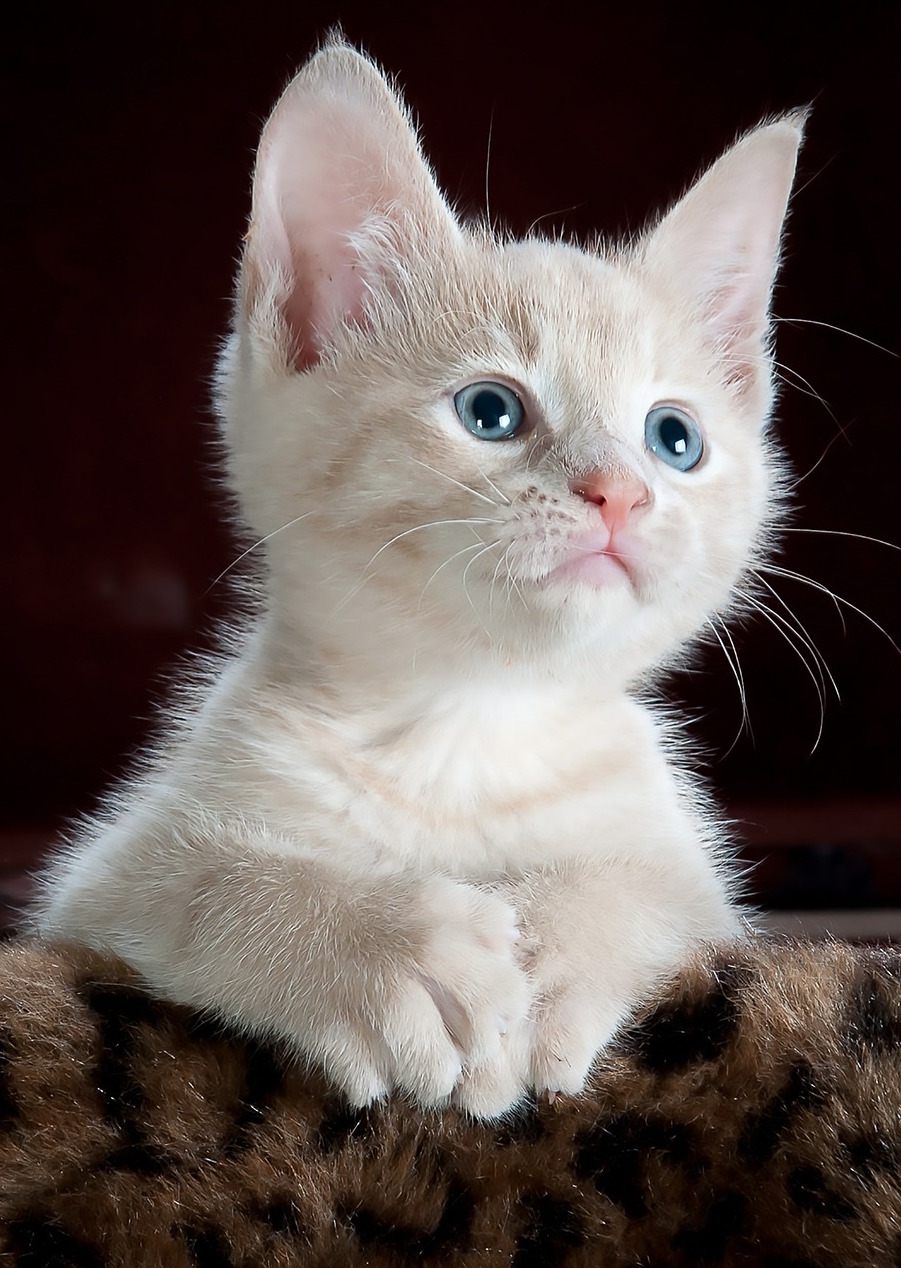Photo Credit: Pixabay (CC0 Public Domain)
BABY BLUES: Kittens are born with blue eyes. A cat’s permanent eye color develops by 10 to 12 weeks of age. [1]
USEFUL MUSTACHE: A cat’s whiskers have many nerve endings that serve as touch receptors that can initiate a blink response to protect the eyes. The sensitive whiskers also serve as a navigational aid in the dark and help detect the movement of prey. [2]
NIGHT STALKER: Cats are naturally nocturnal hunters with great night vision. Reflective membranes behind a feline's retina called the tapetum aid in maximizing available light during darkness. [3]
TRUE COLORS: Cats see the world similar to how a color-blind human does. They can see shades of blue and green, but they have a hard time distinguishing reddish tones. Different shades of red tones may appear greenish or bluish to a cat. [3]
MEMORY CHAMPS: Compared to dogs, cats have longer memory retention. Cats can recall information for about 16 hours—a dog’s recall lasts about 5 minutes. [4]
References:
[1] Hartwell, Sarah. "Eye Colours." Eye Colours. MessyBeast, 2009. Web. 20 Jan. 2016.
[2] Johnson-Bennett, Pam. "Your Cat’s Whiskers." Cat Whiskers. Pam Johnson-Bennett, n.d. Web. 20 Jan. 2016.
[3] Spector, Dina. "How Cats See The World Compared To Humans [PICTURES]." Business Insider. Business Insider, Inc, 16 Oct. 2013. Web. 20 Jan. 2016.
[4] "How Cats Remember." How Cats Remember. NJ Pet Community, n.d. Web. 20 Jan. 2016.



